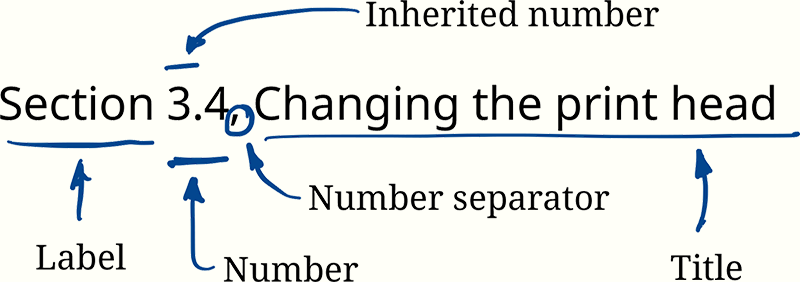$v:xref-properties
$v:xref-properties — Controls how cross-references are formatted.
Synopsis
|<xsl:variable name="v:xref-properties"
| as="element()+">
| <xsl:sequence select="$v:user-xref-properties"/>
| <crossref xpath="self::db:section[ancestor::db:preface]"
| prefix-key="sectioncalled"
| label="false"
| number="false"
| title="true"
| inherit="ancestor::db:preface[1]"
| inherit-separator="in the"/>
| <crossref xpath="self::db:section"
| label="true"
| number="true"
| title="true"/>
| <crossref xpath="self::db:preface|self::db:partintro"
| label="false"
| number="false"
| title="true"/>
| <crossref xpath="self::db:chapter|self::db:appendix"
| label="true"
| number="true"
| title="true"/>
| <crossref xpath="self::db:part|self::db:reference"
| label="true"
| number="true"
| title="true"/>
| <crossref xpath="self::db:figure|self::db:example|self::db:table |self::db:procedure|self::db:equation |self::db:formalgroup"
| label="true"
| number="true"
| title="true"/>
| <crossref xpath="self::db:listitem[parent::db:orderedlist]"
| label="false"
| number="true"
| title="false"/>
| <crossref xpath="self::db:question|self::db:answer"
| label="true"
| number="false"
| title="false"/>
| <crossref xpath="self::db:step"
| label="false"
| number="true"
| prefix-key="step"
| title="false"/>
| <crossref xpath="self::db:see" prefix-key="see" title="true"/>
| <crossref xpath="self::db:seealso" prefix-key="seealso" title="true"/>
| <crossref xpath="self::db:glosssee" prefix-key="glosssee" title="true"/>
| <crossref xpath="self::db:glossseealso"
| prefix-key="glossseealso"
| title="true"/>
| <crossref xpath="self::*" label="false" number="false" title="true"/>
|</xsl:variable>
Description
Cross-references, like title properties, are complicated. They can occur almost anywhere and several styles are possible.
This image shows the cross-reference “Section 3.4, Changing the print head” identifying “Section” as the label, “3.4” as the number, and “, ” as number separator and “Changing the print head” as the title.

For documents with numbered sections, a style such as the one shown in Figure 1.1, Cross-reference Properties (numbered) is common. Here the label, number, and title are sufficient.
This image shows the title “Section 3.4 Changing the print head” identifying “Section” as the label, “3.4” as the number, and “3.” as the inherited number.

For documents without section numbers, a different approach is required. In Figure 1.2, Cross-reference Properties (contextual), we see how a prefix (which can be literal text or a key into a localization) precedes the title. If an inherit reference is defined, the cross reference will include a reference to that element as well. A separator can be placed between them. If the format for the inherited reference also specifies an inherited reference, the process will continue.